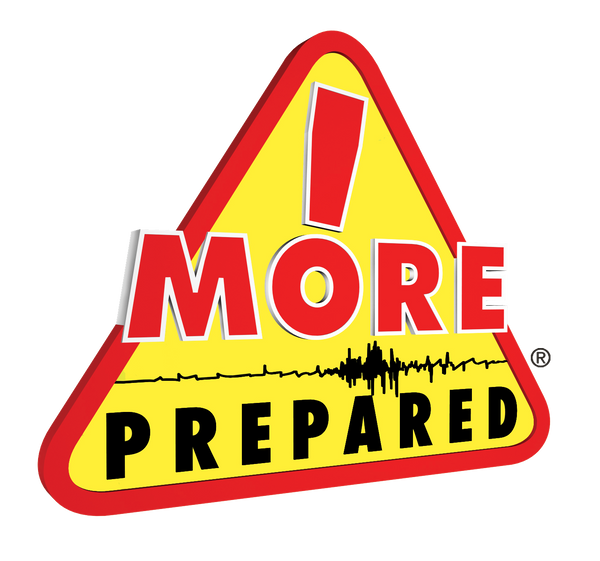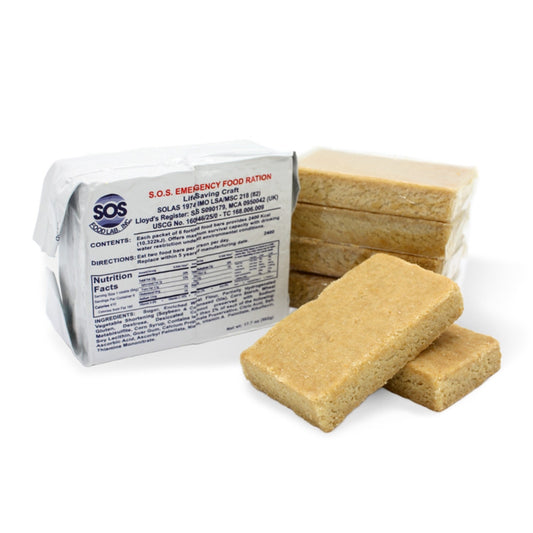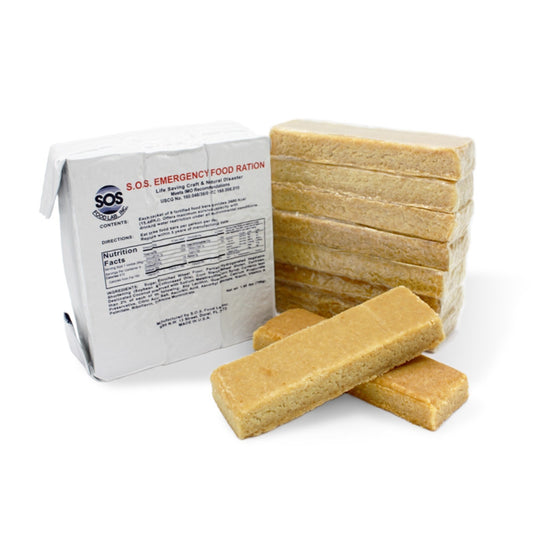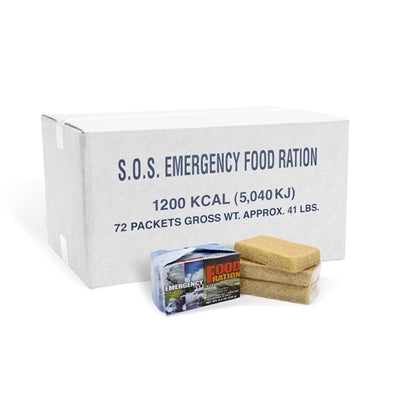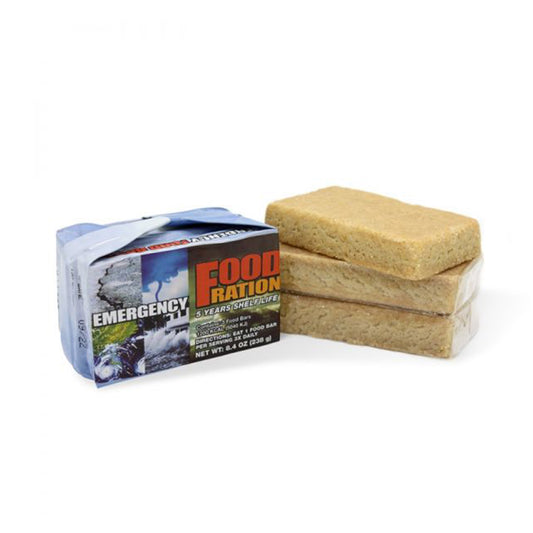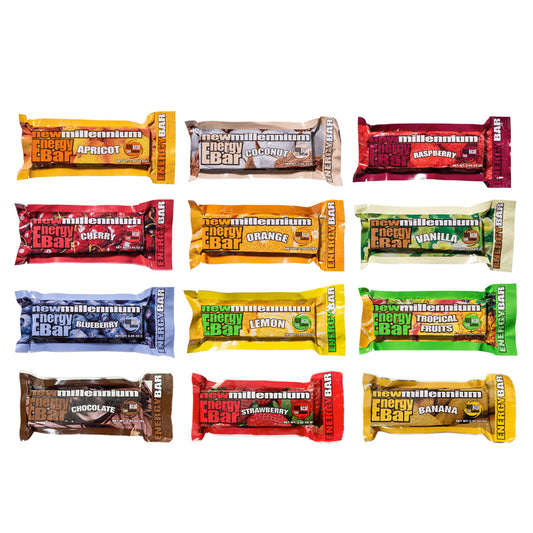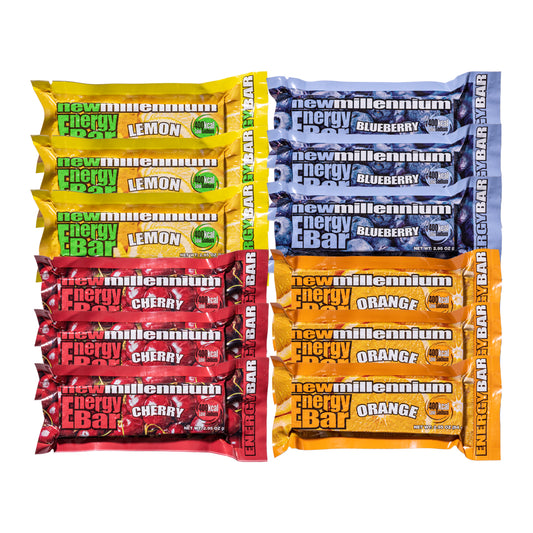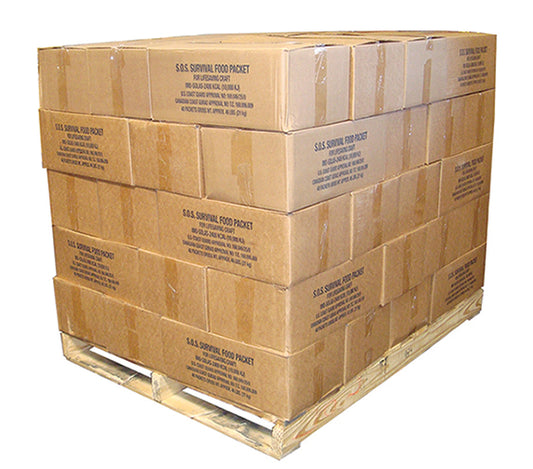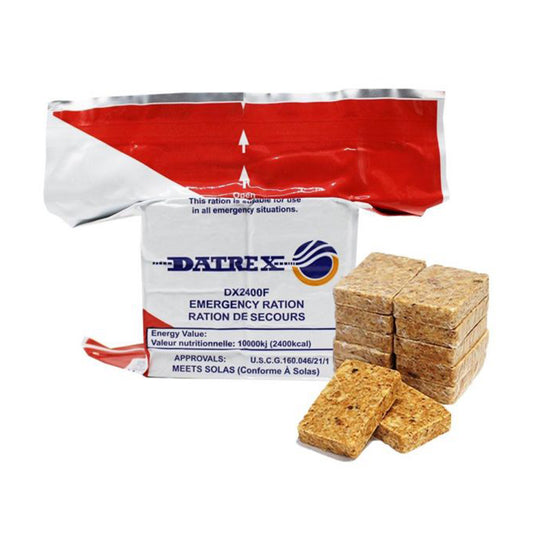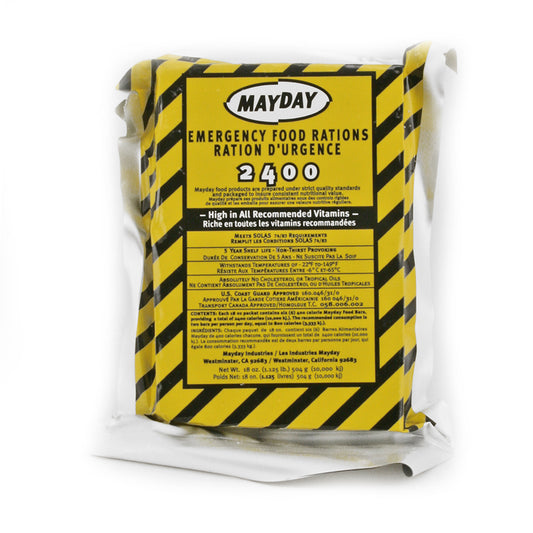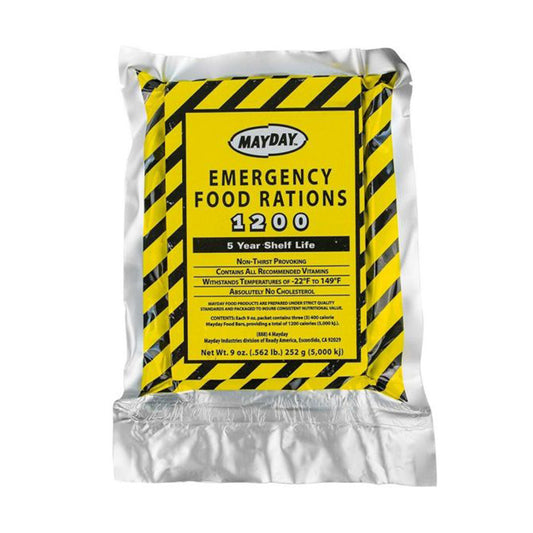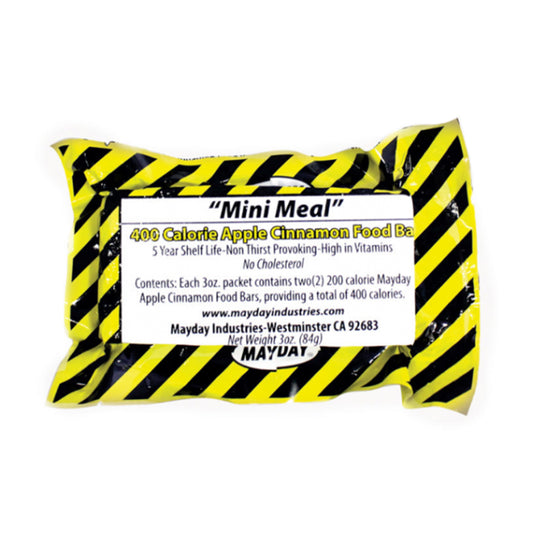Collection: Emergency Food Bars
Emergency food bars provide long-lasting, ready-to-eat nutrition for disaster preparedness, workplace safety programs, emergency kits, and bulk emergency storage. These bars are compact, calorie-dense, non-thirst-provoking, and require no cooking or refrigeration.
-
SOS Emergency Food Bar 2400 Calorie
Regular price From $4.50Regular priceUnit price / per -
SOS Emergency Food Bar 3600 Calorie
Regular price From $6.75Regular priceUnit price / per -
SOS Emergency Food Bar 1200 Calorie - Case of 72
Regular price $215.00Regular priceUnit price / per -
SOS Emergency Food Bar 1200 Calorie - Pallet of 3600
Regular price $9,995.00Regular priceUnit price / per -
New Millennium 400 Calorie Energy Bar - 12 Fruit Flavors
Regular price From $1.99Regular priceUnit price / per -
New Millennium 400 Calorie Energy Bar - Assorted Multipack
Regular price From $22.99Regular priceUnit price / per -
New Millennium Bar Case of 144 - Variety
Regular price $239.00Regular priceUnit price / per -
New Millennium 400 Calorie Food Bar - Pallet
Regular price $12,999.00Regular priceUnit price / per -
Mayday 2400 Calorie Vegan Food Bar - 10 Year Shelf Life
Regular price From $10.99Regular priceUnit price / per -
Datrex 2400 Calorie Food Bar
Regular price From $4.50Regular priceUnit price / per -
Datrex 3600 Calorie Food Bar
Regular price From $6.50Regular priceUnit price / per -
Mayday Emergency Food Bar - 2400 Calorie
Regular price From $4.27Regular priceUnit price / per -
Mayday Emergency Food Bar - 3600 Calorie
Regular price From $5.97Regular priceUnit price / per -
1200 Calorie Mayday Emergency Food Bar
Regular price From $129.00Regular priceUnit price / per -
400 Calorie Mayday "Mini Meal" Emergency Food Bar
Regular price From $219.00Regular priceUnit price / per -
Mainstay 2400 Calorie Food Bar
Regular price From $100.00Regular priceUnit price / per
Emergency food bars are an essential part of disaster preparedness, providing stable, ready-to-eat nutrition designed for survival situations such as earthquakes, evacuations, shelter-in-place events, workplace preparedness, and emergency response planning. Unlike everyday snacks, emergency food bars are specifically engineered for emergency use: they are calorie-dense, non-thirst-provoking, shelf-stable, and require no cooking, heating, or refrigeration.
Food bars are available in multiple calorie formats including 400-calorie individually wrapped portions and larger 2,400- or 3,600-calorie packaged units that are divided for easier rationing and distribution. Some brands offer individually wrapped segments for quick portion control (ideal for workplaces, schools, and emergency caches), while others include larger molded bars packaged as a single unit. Both formats are designed to meet emergency nutrition needs efficiently.
Most emergency food bars have a five-year shelf life and many are U.S. Coast Guard and Transport Canada approved, ensuring performance and safety even in extreme temperature environments such as vehicles or outdoor storage. Some varieties also include enriched vitamins and minerals to support energy and balanced nutrition during extended emergencies.
Emergency food bars are a compact and cost-effective way to build preparedness kits for families, schools, workplaces, CERT teams, and large-scale institutional storage. They are commonly used in 72-hour emergency kits, go-bags, classrooms, offices, emergency bins, disaster relief deployment, and vehicle emergency kits.
FAQ
How many emergency food bars do I need per person?
A standard 72-hour emergency supply includes 2,400–3,600 calories per person, depending on the brand. One 2400-calorie or 3600-calorie bar typically meets FEMA’s recommended three-day minimum.
Do emergency food bars require water to consume?
No. Emergency food bars are designed to be non-thirst-provoking, meaning they can be safely eaten even if water is limited.
How long do emergency food bars last?
Most food bars have a five-year shelf life when stored properly, some have 10. Once opened, they should be consumed shortly thereafter.
Are emergency food bars safe for extreme temperatures?
Yes. Many bars which are vacuum-sealed are designed to withstand high heat or cold and are approved by the U.S. Coast Guard, making them suitable for storage in vehicles, emergency kits, or disaster caches.
Are emergency food bars suitable for children?
Yes, as long as there are no dietary restrictions. Many schools include these bars in classroom emergency kits because they are compact, safe, and require no preparation.
Can emergency food bars be stored in a car?
Yes. Because they are shelf-stable and resistant to heat fluctuations, food bars are commonly stored in vehicles for earthquake, evacuation, or roadside preparedness.
Are emergency food bars allergen-friendly?
Ingredients vary by brand. While gluten-free options are not currently available, some emergency food bars are formulated without common allergens such as nuts or soy. Always review ingredient labels carefully, especially when ordering for schools, workplaces, or group settings with dietary sensitivities.
How are emergency food bars packaged?
Packaging varies by manufacturer. Some bars are molded as a single unit, while others are portioned into individually wrapped pieces for easier distribution and consumption. Both formats provide the same emergency calorie requirements.
